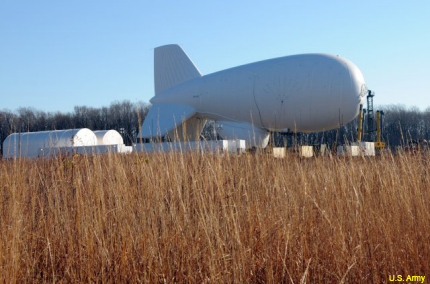Army set to launch aerostat for East Coast missile defense
The blimp-like, radar-equipped vehicle will be tested for integration into NORAD’s air defense systems.

Just in time for the holidays, the Army early next week will launch the first of two radar-equipped aerostats 10,000 feet into the air over the Washington, D.C., area as part of a three-year experiment in integrating aerostats into the NORAD air defense system.
And although NORAD officials assured the world that it would be part of its annual tradition of tracking Santa Claus, the aerostat’s real purpose is cruise missile defense.
The blimp-like aerostat, helium-filled and tethered to the ground at all times, is part of the Joint Land Attack Cruise Missile Defense Elevated Netted Sensor, or JLENS, system. It’s equipped with cruise missile detection radar that will nearly double the range of ground systems. From its position at the Army’s Aberdeen Proving Ground, Md., north of Baltimore, it will have a range reaching from upstate New York to just south of Norfolk, Va., the Army said.
The purpose of the test is to see if JLENS aerostats can be incorporated into the North American Aerospace Defense Command systems that keep an eye on airspace over the East Coast. A second aerostat will be launched in late winter or early spring.
If the tests are successful, using aerostats for cruise missile defense would prove to be both functional and frugal. From 10,000 feet up, an aerostat can get a much more complete picture of the skies than ground-based systems.
"Current systems do have limitations ... we have limited ability to detect," Maj. Gen. Glenn Bramhall, commander of the 263rd Army Air and Missile Defense Command, said during a press briefing. "With an elevated sensor, such as JLENS ... [we have] the ability to look over the horizon, we have the ability to detect, and to enable our systems to defeat cruise missiles."
The aerostat would stay aloft for 30 days at a time, being brought down only for maintenance or sever weather, which Bramhall said is a lot cheaper that flying aircraft equipped with the Airborne Warning and Control System.
The military has used aerostats for surveillance in Afghanistan and some of those that have returned have been put to other uses, such as watching the Texas-Mexico border. But although people these days might have reason to think that the government is keeping an eye on them, a NORAD spokesman assured CNN that this aerostat is not for surveillance. Except, of course, for Santa.



